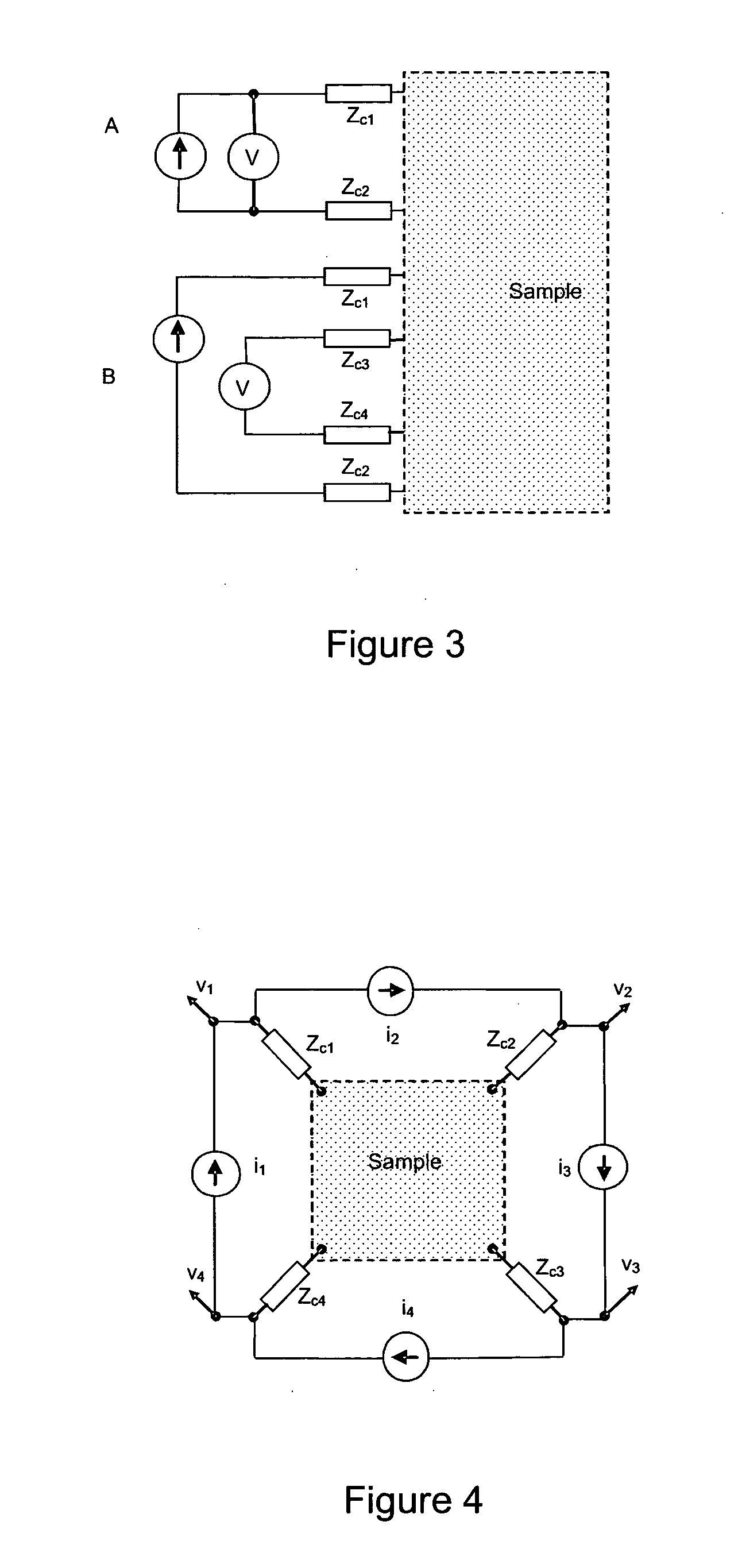System and Method for Conducting Multiplexed Electrical Impedance Tomography
a technology of electrical impedance tomography and system, which is applied in the field of system and method for conducting multiplexed electrical impedance tomography, can solve the problems of difficult to achieve in practice, and inability to achieve frame rates in excess of 100 frames/second,
- Summary
- Abstract
- Description
- Claims
- Application Information
AI Technical Summary
Benefits of technology
Problems solved by technology
Method used
Image
Examples
Embodiment Construction
[0029]The principle of code division multiplexing (CDM) is that the signal through a particular channel is modulated using a unique binary digital code to provide, in the instance illustrated in FIG. 1, four different channels that are differently coded in the manner indicated and that are indicated by numeral (1).
[0030]The basic requirements of the codes are that there should be at least one code per channel; that the codes should be orthogonal, or nearly so; and that the autocorrelation functions of the codes should be flat with a single sharp peak (in the ideal case, approximating a delta function).
[0031]Each resulting unique channel (2) in the measurement system is thus stimulated using a driving signal current modulated with a unique code. The channels are either deliberately or inadvertently mixed together as indicated by numeral (3).
[0032]At receivers that are indicated by numeral (4), the contribution due to each channel is recovered by cross-correlating the signal at the re...
PUM
 Login to View More
Login to View More Abstract
Description
Claims
Application Information
 Login to View More
Login to View More - R&D
- Intellectual Property
- Life Sciences
- Materials
- Tech Scout
- Unparalleled Data Quality
- Higher Quality Content
- 60% Fewer Hallucinations
Browse by: Latest US Patents, China's latest patents, Technical Efficacy Thesaurus, Application Domain, Technology Topic, Popular Technical Reports.
© 2025 PatSnap. All rights reserved.Legal|Privacy policy|Modern Slavery Act Transparency Statement|Sitemap|About US| Contact US: help@patsnap.com



